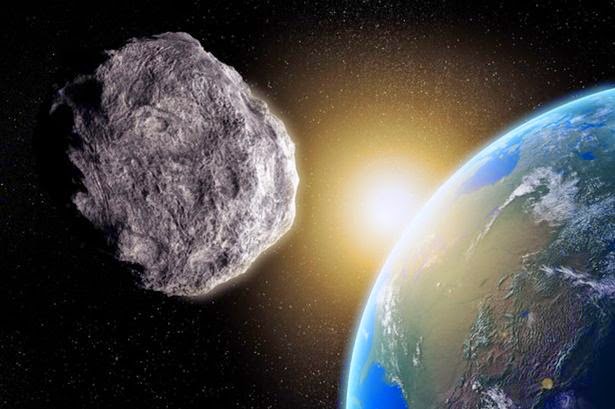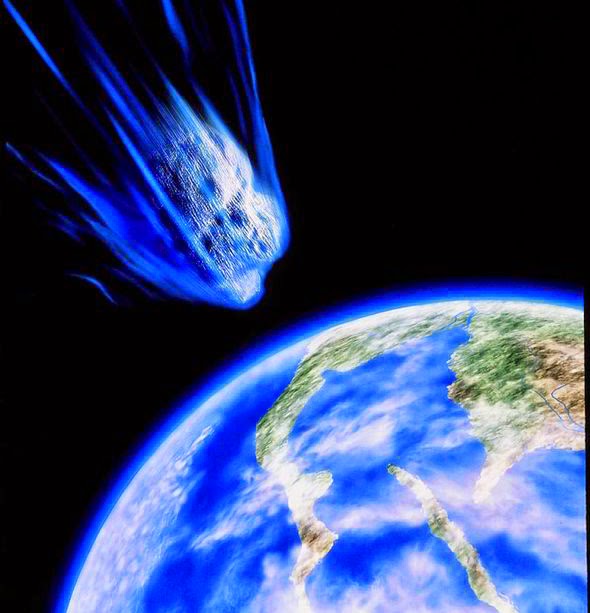
A MAMMOTH asteroid capable of wiping out an entire country is on a near-collision course with Earth, it has emerged.
The 1,000-metre wide monster will hurtle terrifyingly close to the planet within days, sparking fears of an unprecedented disaster.
The object called ‘2014-YB35’ is almost the same size as Ben Nevis and will skim the Earth on FRIDAY travelling at more than 23,000 mph.
Small meteorites often pass close by however one of this size is a once in 5,000-year occurrence, according to concerned astronomers.

A collision with Earth would unleash an explosive force equivalent to more than 15,000 million tonnes – 15,000 megatons – of TNT.
The path of the asteroid is shown below in an animated ‘trajectory map’ released by NASA. It can clearly be seen only narrowly missing the Earth.
Any impact would trigger devastating changes in the climate, earthquakes and tsunamis leading to the eradication of entire communities. It would eclipse the destruction caused by the 1908 Tunguska Event which saw a 50-metre lump of extraterrestrial rock crash into Siberia.
It flattened an estimated 80 million trees and sent a shock wave across Russia measuring five on the Richter scale.
Experts warn it is only a matter of time before an asteroid capable of “lifer altering” damage collides with our planet.
Bill Napier, professor of astronomy at the University of Buckinghamshire, said there is a “very real risk” of a comet or damaging asteroid hitting Earth.
He said: “Smaller scale events like Tunguska are absolutely a real risk, largely they are undiscovered and so we are unprepared.
“With something like YB35, we are looking at a scale of global destruction, something that would pose a risk to the continuation of the planet.
“These events are however very rare, it is the smaller yet still very damaging impacts which are a very real threat.”
Experts warn if one of these monsters were to hit Earth plumes of debris thrown into the atmosphere, changing the climate and potentially making the planet inhabitable for all life.
Smaller impacts would be capable of destroying cities and knocking out transport and communication networks.
Professor Napier added: “The real risk is from comets which even if the Earth passes through the tail can generate a massive plume of smoke with hugely significant consequences.
“There is absolutely a real risk and if you look at history, certainly biblical records, there are reports of fires in the heavens.
“Red hot debris resulting from the impact of something a kilometre wide would be capable of incinerating the planet.” According to NASA’s Near Earth Object Programme the enormous lump of rock will pass within 2.8 million miles – a tiny distance in astronomical terms – of Earth on Friday.

Images from NASA’s jet propulsion Laboratory show the asteroid ‘on course’ with the Earth’s own trajectory.
Though its exact size is unknown it is estimated to be from between 500 metres and 1km wide with 990 metres the most likely.
The object was first spotted by the Catalina Sky Survey at the end of last year with astronomers expected to be closely watching its progress this week.
Astronomers have named June 30 as Asteroid Day to highlight the dangers of Potentially Dangerous Asteroids (PHAs) hurtling through space.
Initiative co-founder Grigorij Richters warned there are thousands which have not been identified which could ”destroy life”.
He said: “It just takes one asteroid to completely destroy life, not just humanity, but all species.
Source: express.co.uk









